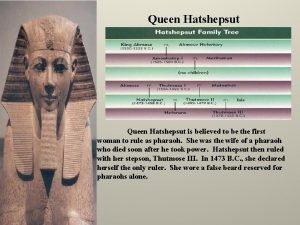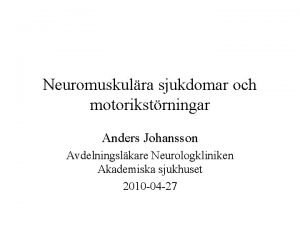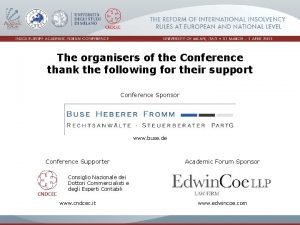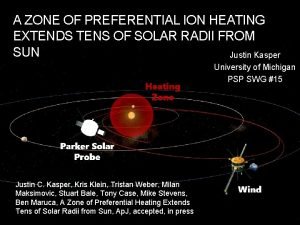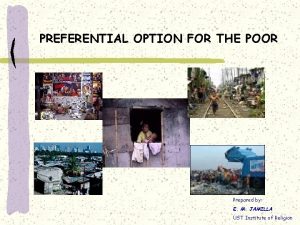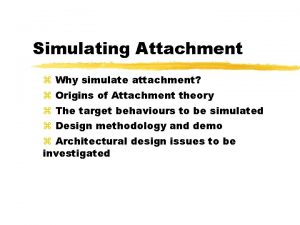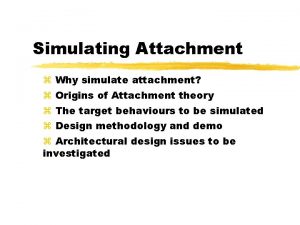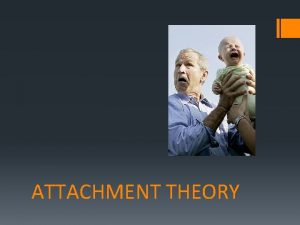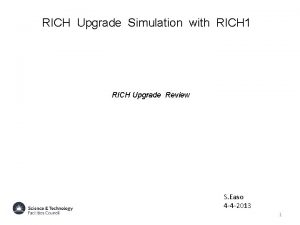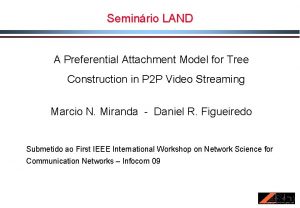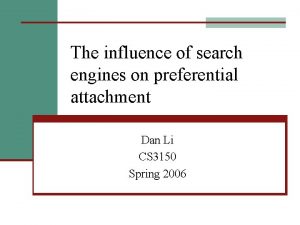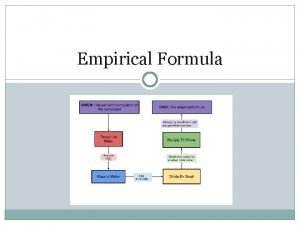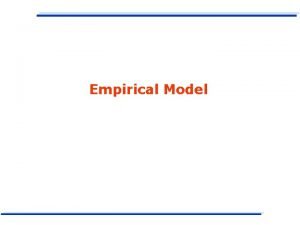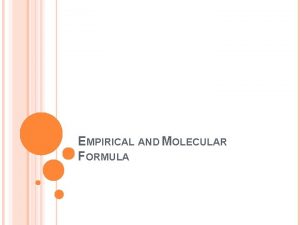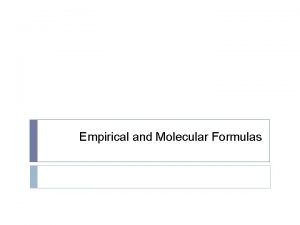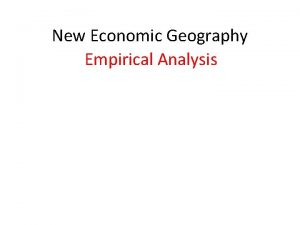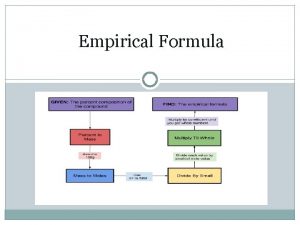4 PREFERENTIAL ATTACHMENT The rich gets richer Empirical



























- Slides: 27

4. PREFERENTIAL ATTACHMENT The rich gets richer

Empirical evidences Many large networks are scale free The degree distribution has a power-law behavior for large k (far from a Poisson distribution) Random graph theory and the Watts. Strogatz model cannor reproduce this feature

We can construct power-law networks by hand Which is the mechanism that makes scale-free networks to emerge as they grow? Emphasis: network dynamics rather to construct a graph with given topological features

Topology is a result of the dynamics But only a random growth? In this case the distribution is exponential!

Barabasi-Albert model (1999) Two generic mechanisms common in many real networks – Growth (www, research literature, . . . ) – Preferential attachment (idem): attractiveness of popularity The two are necessary

Growth t=0, m 0 nodes Each time step we add a new node with m ( m 0) edges that link the new node to m different nodes already present in the system

Preferential attachment When choosing the nodes to which the new connects, the probability that a new node will be connected to node i depends on the degree ki of node i Linear attachment (more general models) Sum over all existing nodes

Numerical simulations Power-law P(k) k- SF=3 The exponent does not depend on m (the only parameter of the model)

=3. different m’s. P(k) changes.

Degree distribution Handwritten notes

Preferential attachment but no growth t=0, N nodes, no links Power-laws at early times P(k) not stationary, all nodes get connected ki(t)=2 t/N


Average shortest-path <k>=k SF model just a fit

No theoretical stimations up to now The growth introduces nontrivial corrections Whereas random graphs with a powerlaw degree distribution are uncorrelated

Clustering coefficient 5 times larger SW: C is independent of N NO analytical prediction for the SF model

Scaling relations

Spectrum exponential decay around 0 power law decay for large | |

Nonlinear preferantial attachment Sublinear: stretch exponential P(k) Superlinear: winner-takes-all

Nonlinear growth rates Empirical observation: the number of links increases faster than the number of nodes Accelerated growth Crossover with two power-laws

Growth constraints Power-laws followed by exponential cutoffs Model: when a node – reaches a certain age (aging) – has more than a critical number of links (capacity) – Explains the behavior

Competition Nodes compete for links Power-law with a logarithmic correction

The Simon model H. A. Simon (1955) : a class of models to account empirical distributions following a power-law (words, publications, city populations, incomes, firm sizes, . . . )

Algorithm Book that is being written up to N words f. N(i) number of different words that each occurred exactly i times in the text Continue adding words With probability p we add a new word With probability 1 -p the word is already written The probability that the (n+1)th word has already appeared i times is proportional to i f. N(i) [the total number of words that have occurred i times]

Mapping into a network model With p a new node is added With 1 -p a directed link is added. The starting point is randomly selected. The endpoint is selected such that the probability that a node belonging to the Nk nodes with k incoming links will be chosen is

Does not imply preferential attachment Classes versus actual nodes No topology

Error and attack tolerance High degree of tolerance against error Topological aspects of robustness, caused by edge and/or link removal Two types of node removal: – Randomly selected nodes (errors!) – Most highly connected nodes are removed at each step (this is an attack!)

Removal of nodes Squares: random Circles: preferential
 The richer the poorer by dorothy west
The richer the poorer by dorothy west Hatshepsut wanted to make egypt richer through
Hatshepsut wanted to make egypt richer through Tvångsgråt
Tvångsgråt Richer interaction in hci
Richer interaction in hci The richer scale
The richer scale Love is his word love is his way
Love is his word love is his way Injustice anywhere is a threat to justice everywhere essay
Injustice anywhere is a threat to justice everywhere essay Rural preferential recruitment pathway
Rural preferential recruitment pathway Floating charge
Floating charge Preferential
Preferential Preferential pacifism
Preferential pacifism Gender preferential speech features
Gender preferential speech features Sonksen logmar chart
Sonksen logmar chart What is preferential allotment
What is preferential allotment Option for the poor meaning
Option for the poor meaning Preferential procurement regulations 2017
Preferential procurement regulations 2017 đặc điểm cơ thể của người tối cổ
đặc điểm cơ thể của người tối cổ Các châu lục và đại dương trên thế giới
Các châu lục và đại dương trên thế giới Mật thư anh em như thể tay chân
Mật thư anh em như thể tay chân Chụp phim tư thế worms-breton
Chụp phim tư thế worms-breton ưu thế lai là gì
ưu thế lai là gì Tư thế ngồi viết
Tư thế ngồi viết Thẻ vin
Thẻ vin Cái miệng bé xinh thế chỉ nói điều hay thôi
Cái miệng bé xinh thế chỉ nói điều hay thôi Các châu lục và đại dương trên thế giới
Các châu lục và đại dương trên thế giới Bổ thể
Bổ thể Từ ngữ thể hiện lòng nhân hậu
Từ ngữ thể hiện lòng nhân hậu Tư thế ngồi viết
Tư thế ngồi viết

